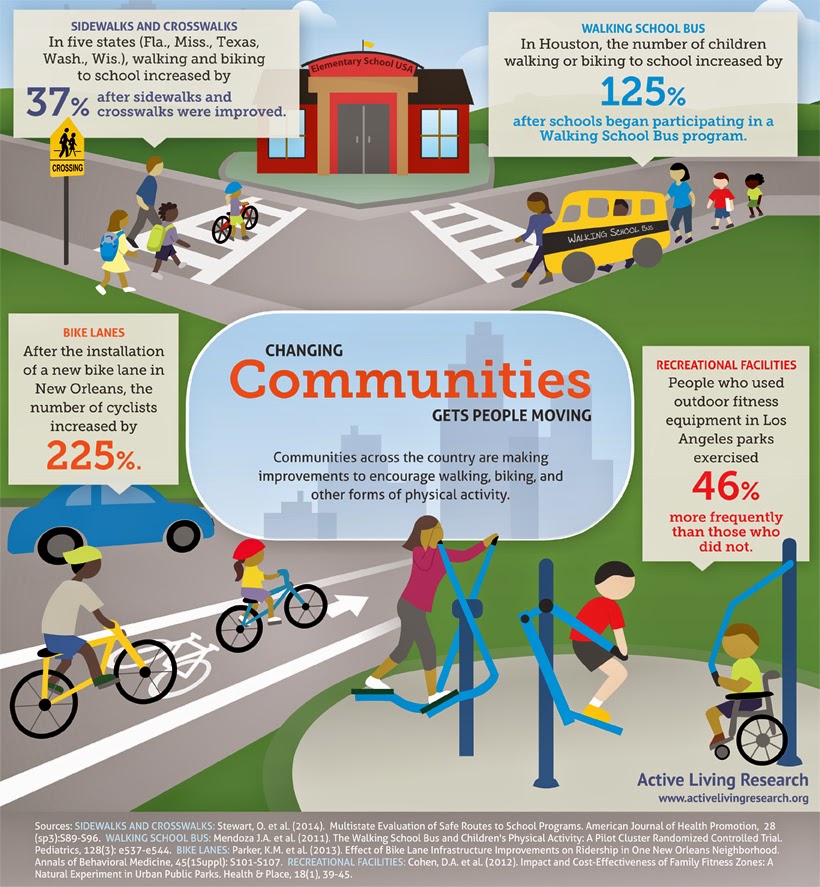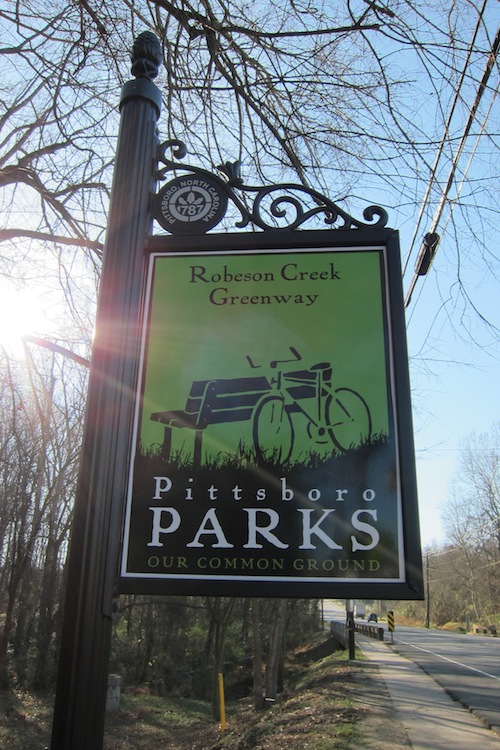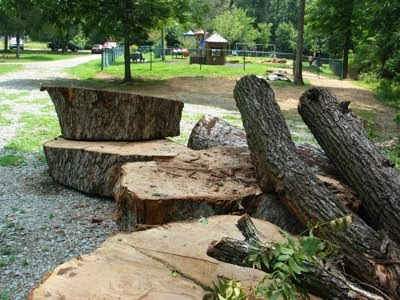Urban Form Affects Physical Activity Levels
This infographic from Active Living Research demonstrates how profoundly community design impacts how physically active people are. Bike lanes encourage more biking, dense development, sidewalks and greenways encourage more walking, and parks encourage more play. Urban form affects physical activity levels and physical activity levels are linked to specific health outcomes.
If you're interested in scratching the surface below the level of an infographic, this research paper explores the Relationship Between Urban Sprawl and Physical Activity, Obesity and Morbidity.
A few quick excerpts:
"Despite the health benefits of physical activity, 74% of U.S. adults do not get enough physical activity to meet public health recommendations and about one in four U.S. adults remains completely inactive during their leisure time."
"Recent data from the National Health and Nutrition Examination Survey (NHA-NES) found that 64.5% of the U.S. adult population is overweight and almost one in three is obese (30.5%). Excess weight and physical inactivity are reported to account for over 300,000 premature deaths each year, second only to tobacco-related deaths among preventable causes of death."
"This exploratory study seems to indicate that, after controlling for individual differences, those living in sprawling counties are likely to walk less in their leisure time, weigh more, and have greater prevalence of hypertension than those living in more compact places"
 |
| Click to Enlarge |
A few quick excerpts:
"Despite the health benefits of physical activity, 74% of U.S. adults do not get enough physical activity to meet public health recommendations and about one in four U.S. adults remains completely inactive during their leisure time."
"Recent data from the National Health and Nutrition Examination Survey (NHA-NES) found that 64.5% of the U.S. adult population is overweight and almost one in three is obese (30.5%). Excess weight and physical inactivity are reported to account for over 300,000 premature deaths each year, second only to tobacco-related deaths among preventable causes of death."
"This exploratory study seems to indicate that, after controlling for individual differences, those living in sprawling counties are likely to walk less in their leisure time, weigh more, and have greater prevalence of hypertension than those living in more compact places"


Comments
Post a Comment